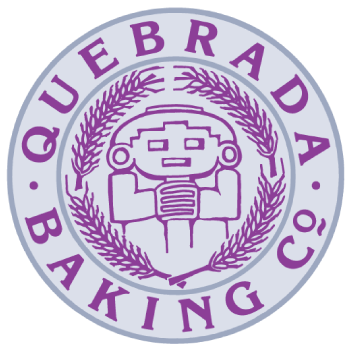A History of Holidays – And The Festive Foods Behind Them

Festive lights, snow angels on the lawn, fresh pies in the oven, and mistletoe… There’s nothing quite as magical as the festive season, is there? The holiday season is all about celebrating your community, giving back, and appreciating all the wonderful little moments that make your life spectacular.
One of our favorite parts of the season? Food, of course! Food brings together family, friends, and loved ones to share memories, celebrate cultural traditions, and savor tasty treats. No matter if you celebrate Hanukkah, Kwanzaa, or Christmas, food is an important part of your celebration. Sitting down with a warm plate of pie and some ice cream, for example, before heading out to take in the holiday lights will always be a special memory.
Between festive seasonal get-togethers, family dinners, and cozy evenings at home, there’s so much to cherish this holiday season. In this blog, we’ll dive into the different, unique holiday traditions and share some of our favorite seasonal treats!
Cultural Traditions
There are three major holidays to celebrate this winter. Learn a little more about Hanukkah, Kwanzaa, and Christmas – and the traditional meals and activities that take place during each of the festivities.
Hanukkah
Hanukkah is an eight-day Jewish celebration that commemorates the rededication during the second century B.C. of the Second Temple in Jerusalem. During this time, according to legend, Jews rose up against their Greek-Syrian oppressors in the Maccabean Revolt.
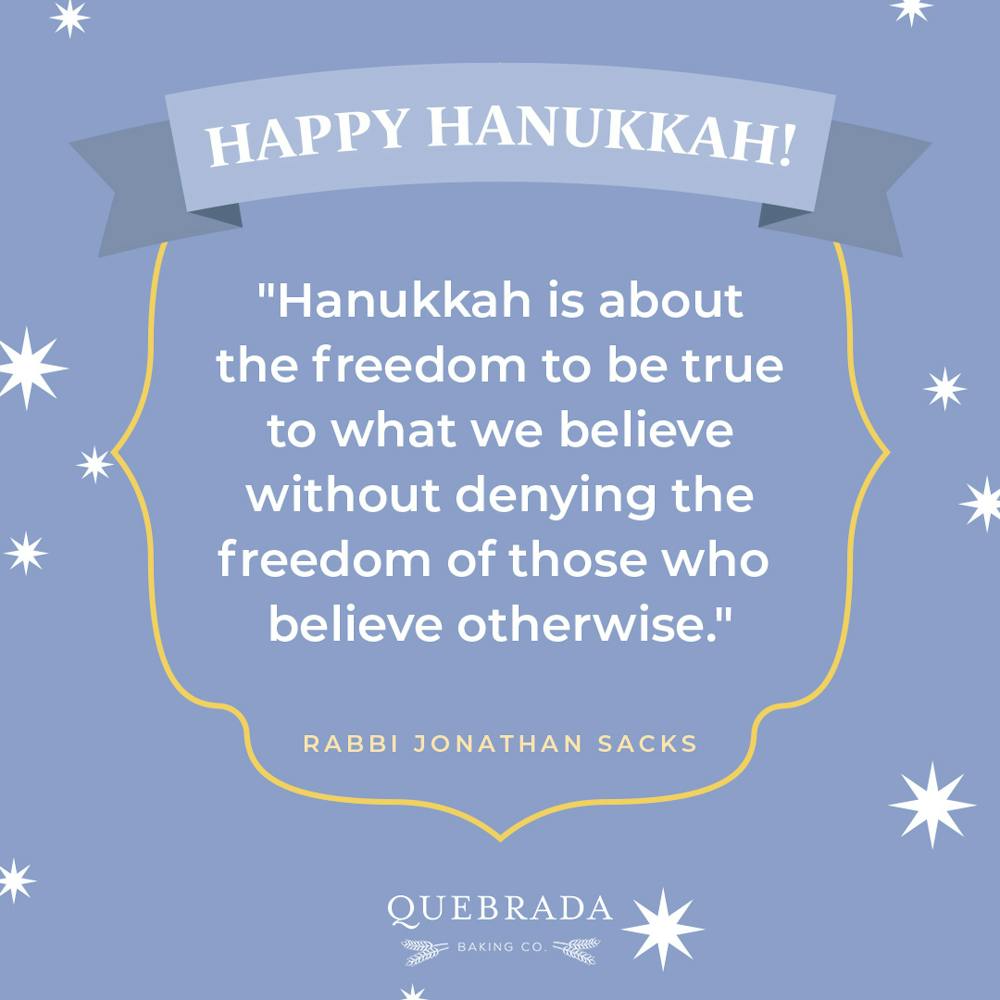
Hanukkah, also known as Chanukah, will begin on the evening of Sunday, December 18th and end on the evening of Monday, December 26th. During Hanukkah, Jewish people will celebrate by lighting one candle each day on their menorah. In addition, religious rituals include recitation of some of the Psalms, almsgiving, and singing of a special hymn. It’s also traditional to play Spin the Dreidel. A dreidel is a spinning top with four sides, each inscribed with a letter of the Hebrew alphabet. Together, the letters mean "A great miracle happened there.”
Other traditions include the exchange of Hanukkah gelt, which is “money” given as presents during the holiday. Nowadays, gelt takes shape as chocolate coins and helps teach kids about the importance of charity and giving to others. Parents will encourage their children to share gelt with friends and loved ones.
During this holiday, it’s traditional to eat loukoumades, pancakes, and latkes. The former are deep-fried puffs dipped in honey or sugar – they symbolize the cakes the Maccabees ate.
Kwanzaa
Kwanzaa is an African-American celebration of life. Dr. Maulana Karenga introduced the festival to the U.S. in 1966 as a way to welcome the first harvests home. Karenga was a Black nationalist who later became a college professor and he created the holiday to unite and empower the African American community. This celebration runs from December 26th to January 1st each year.
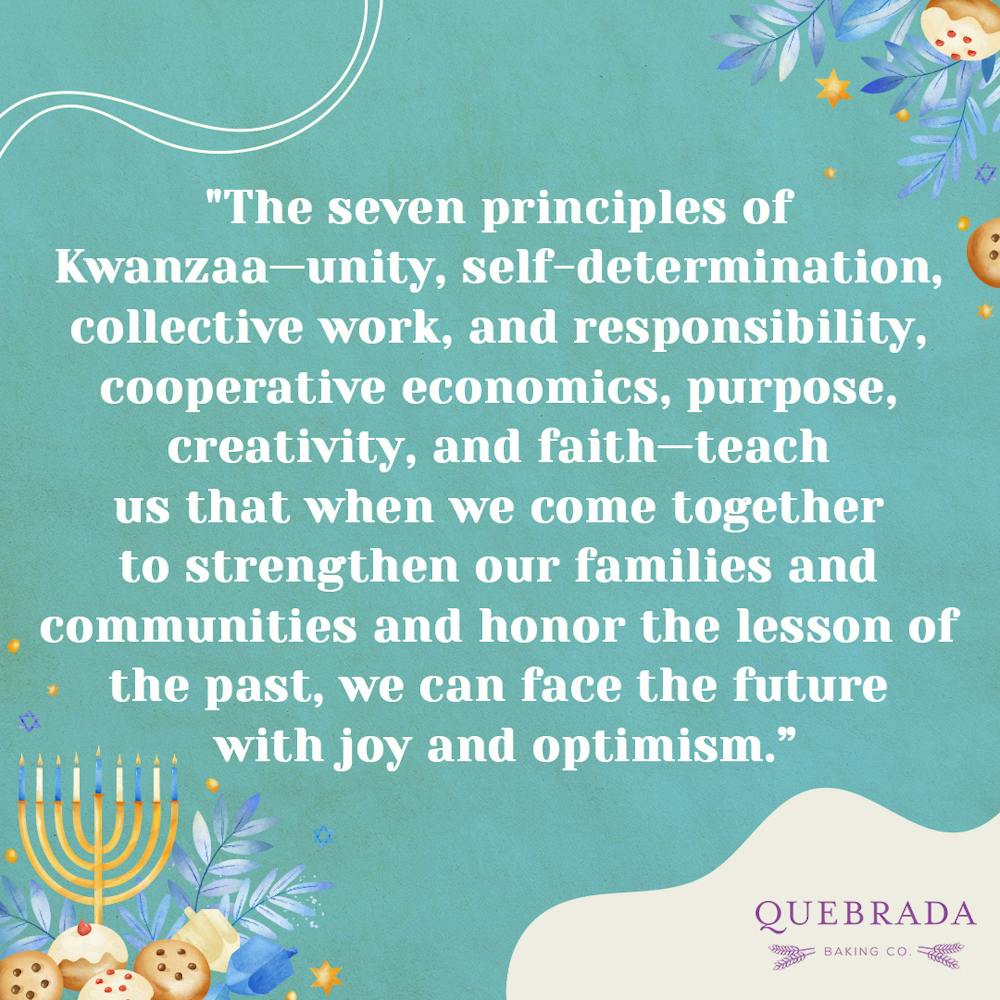
During Kwanzaa, it’s traditional to eat African creole food, Cajun catfish, jerk chicken, and a variety of African dishes like jollof rice or grits, okra, and beans and rice. Each day, there’s a feast called Karamu which highlights foods of the African diaspora. There’s no set menu for Kwanzaa, but it’s important to feast each day in order to strengthen family or community bonds – and savor the blessings of the harvest.
Kwanzaa has several other traditions, as well. During the holiday, people who celebrate will put up a “matunda ya kwanza.” This Swahili phrase refers to an arrangement of items that represent seven symbols in the visual centerpiece of Kwanzaa. This includes a Mkaka, or mat, a Kinara, or candle holder that holds the Mishumaa Saba, or seven candles. There’s one candle for each of the seven principles of Kwanzaa. One of the key customs during this holiday is the daily lighting of different candles. Another Kwanzaa symbol is Muhindi, or corn. One ear of corn is set out for each child in the family. In a family without children, one ear is set out symbolically to represent the children of the community, and the promise of their future.
Christmas
Christmas is an annual festival commemorating the birth of Jesus Christ. This sacred Christian holiday celebrates the birth of their spiritual leader and the founder of Christianity, but many people also celebrate this holiday as more of a cultural event across the globe without the religious connotations. Many people celebrate Christmas on December 25, but some cultures celebrate it on December 24 as well.
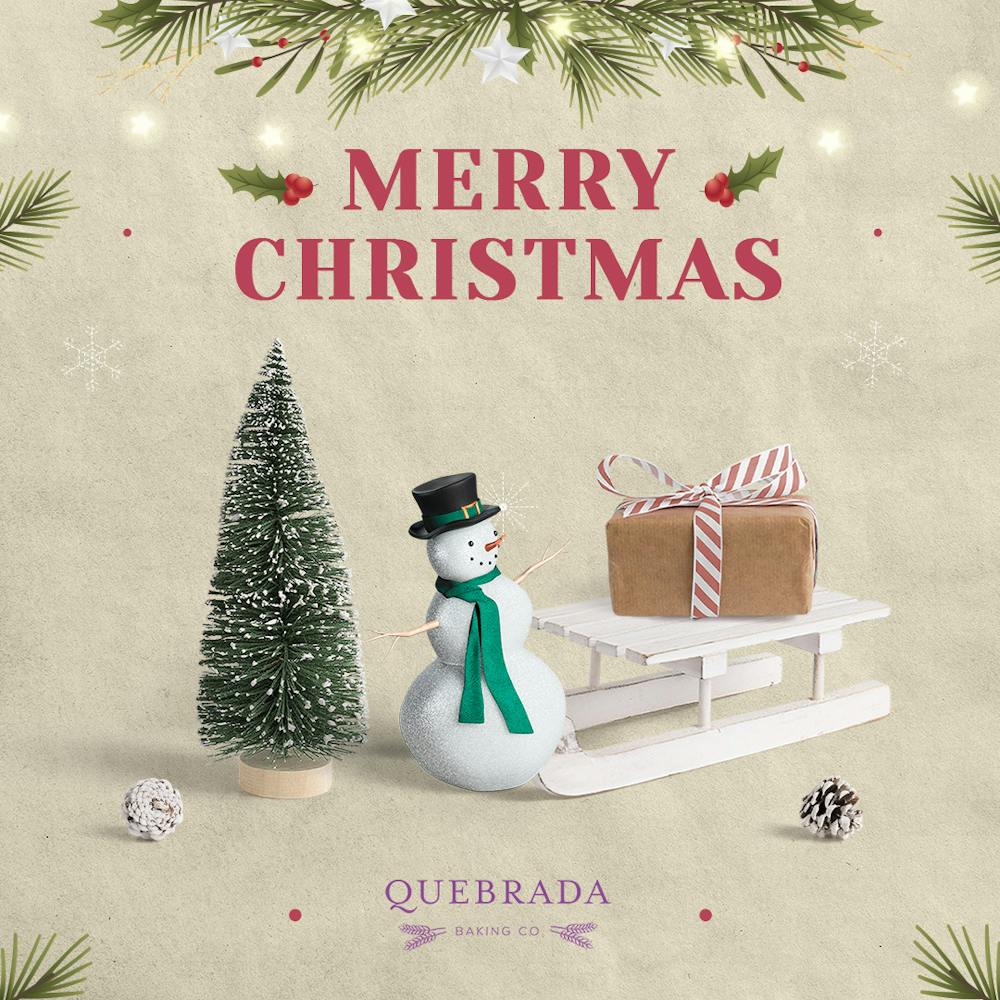
According to tradition passed down in many countries, the Three Wise Men are the ones who visit children's homes at dawn every January 6th and leave them gifts, the same way in which they took gold, incense, and myrrh to Baby Jesus.
The legend of Santa Claus, however, can be traced back to a monk named St. Nicholas. It is believed that Nicholas was born sometime around 280 A.D. in Patara, near Myra in modern-day Turkey. Much admired for his piety and kindness, St. Nicholas became the subject of many legends. It is said that he gave away all of his wealth and traveled the countryside helping the poor and sick.
The traditional Christmas dinner may seem similar to Thanksgiving. Many Americans will roast either turkey or ham as the main meal. However, sides like stuffing, mashed potatoes, gravy, cranberry sauce, and a variety of pies also adorn the table.
Our Favorite Winter Treats
The month of December ushers in the festive, holiday season…and what better way to celebrate than indulging in tasty treats? You don’t have to wait until the actual holiday to take home some of our favorite sweets!
Buche de Noel & Linzertorte
This season, why not try a new type of centerpiece dessert? We still have our classic pies available, of course, but we’re also introducing two new desserts: Buche de Noel and the Linzer Torte.
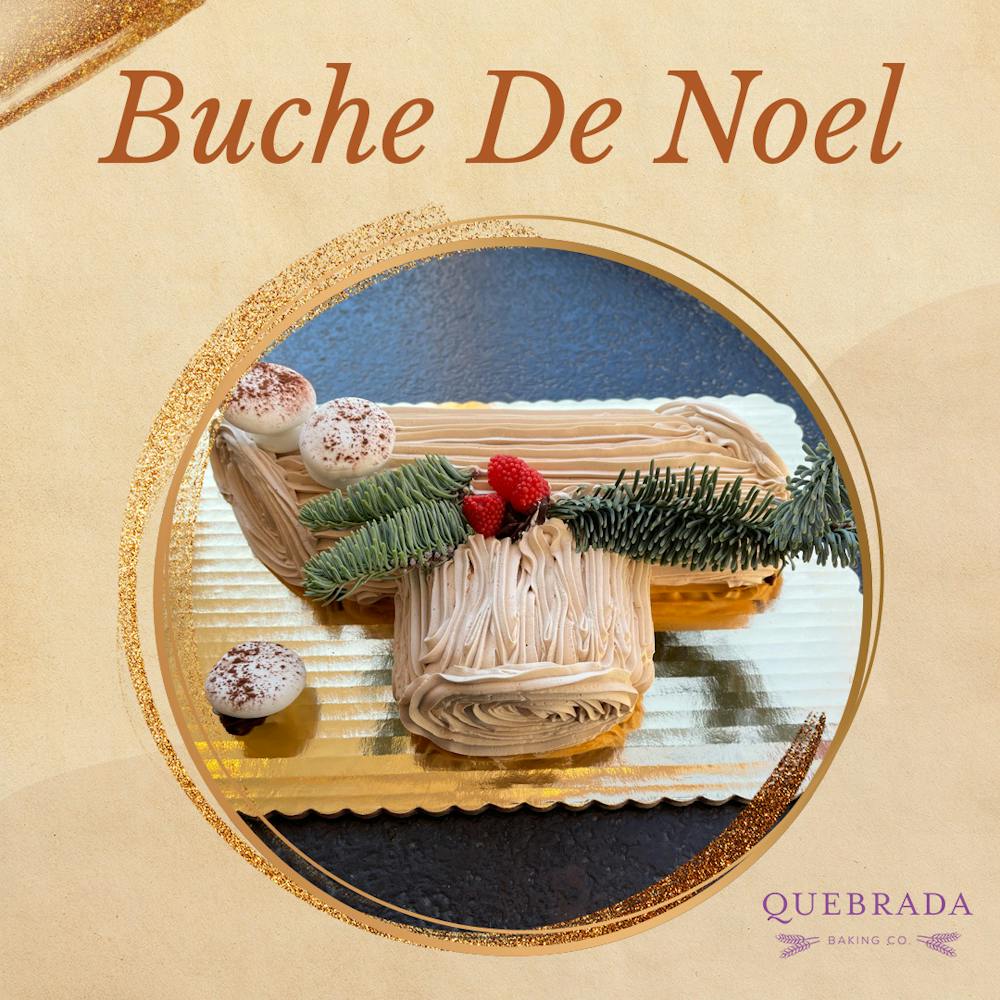
The Buche de Noel has historical significance, too. In France, back in the day, it was traditional to burn an enormous and dense log in the heart of every home for Christmas. The log symbolized a new year – and in turn, misfortunes were burned in the flame. These cakes became a Christmas tradition when a Parisian pastry maker was inspired by the tradition and made these log-like cakes.
Likewise, the Linzer Torte is an Austrian pastry and the world’s oldest known cake; it was first documented by name as early as 1696. The cake’s inventor will likely remain a mystery forever, but the oldest recipe dates back to a 300-year-old cookbook.
Christmas Cupcakes
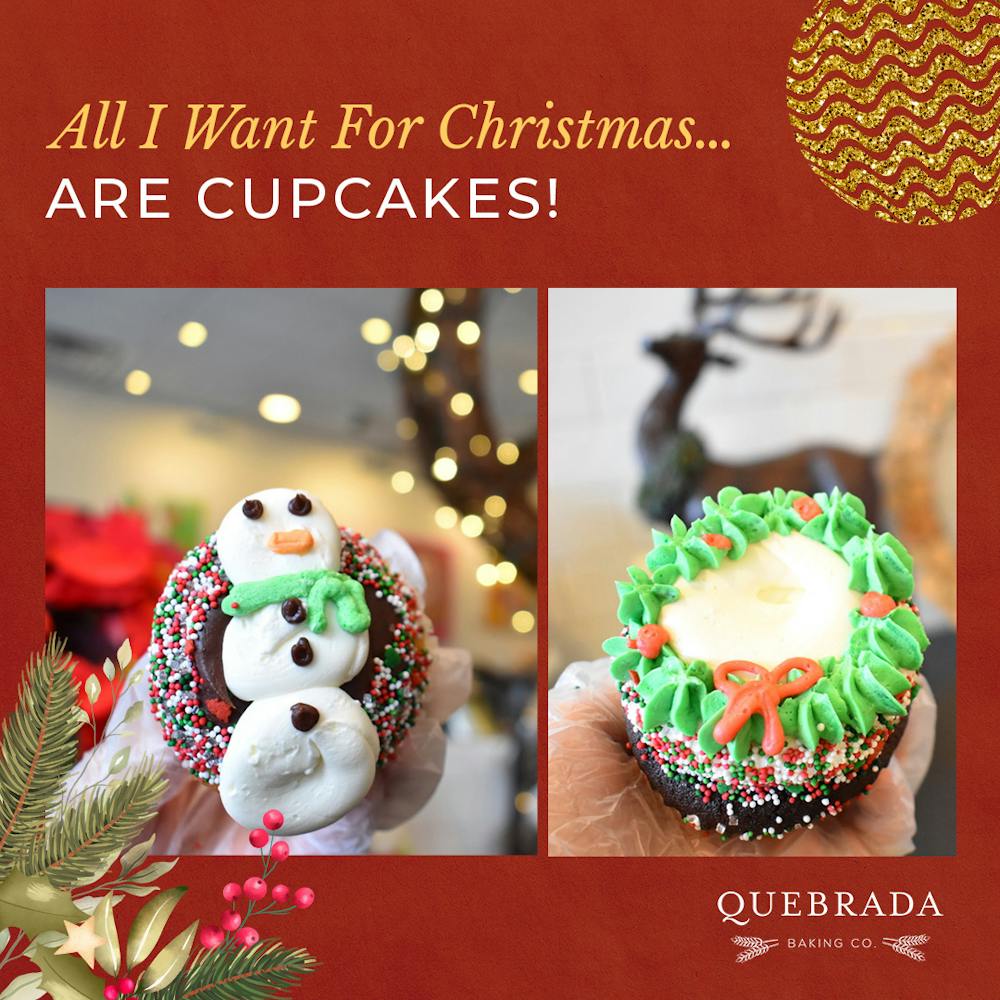
Tell the truth: is there anything cuter than a cupcake with a snowman character on top? Our festive Christmas cupcakes may just be the most adorable way to celebrate the holidays. Traditionally, our cupcakes have sprinkles and sixlet candies on top; this month, we are also decorating with a festive snowman or wreath atop the buttercream frosting!
Shortbread Cookies

Our shortbread cookies are a true classic! These rich cookies come in all different (and festive) shapes and sizes this season: snowmen faces, trees, stars, snowflakes, bells, mittens, and hats. If shortbread isn’t your favorite, stop in and try some of our gingerbread cookies!
Coffee & Teas
It’s cozy season, and that means taking your coffee and tea game to the next level. After all, what’s better than waking up to a winter wonderland with a hot drink? Our seasonal Holiday Blend coffee has notes of caramel, chocolate, and berry, and it’s a customer favorite! If you want something extra, try our peppermint mocha latte. Don’t drink coffee? Our peppermint hot chocolates are divinely made with a pure german chocolate powder mix!
Giving Back: Friends of Boston’s Homeless
The holidays are the perfect time of year to take stock of what you have – and spend time giving something back to the community. As many of you know, Boston can get pretty chilly during the winter. Not everyone has the right clothing for the weather, especially those less fortunate than us. This season, each Quebrada location will have a donation box for warm clothing. The clothes will go to Friends of Boston’s Homeless.
If you feel so generous, we would love it if you could bring some new or gently used warm clothing to donate to those in need. Nothing is too small – gloves, scarves, or socks are perfect, too.
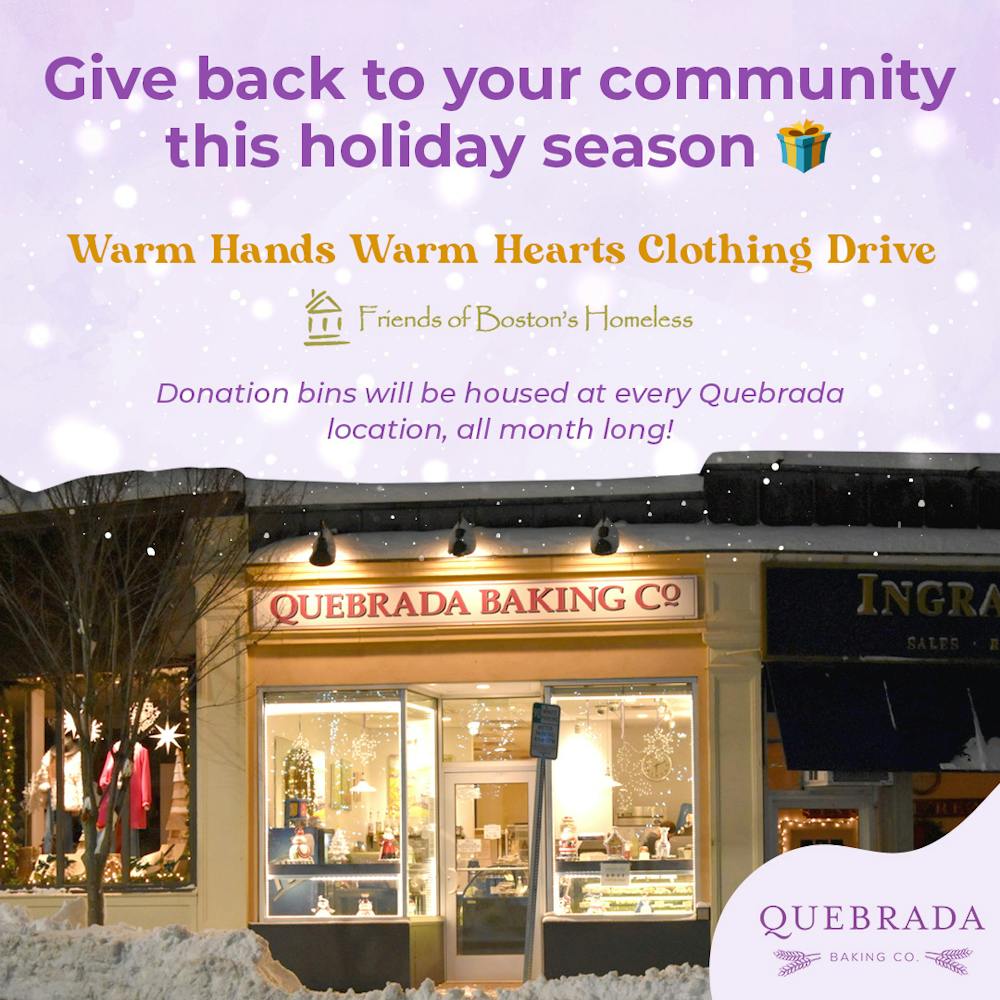
Happy Holidays!
This holiday season, we wish you a peaceful and loving time with those that matter most. Make sure to spend quality time with your loved ones and your family, because there’s nothing quite as special as those shared moments. And don’t forget to give back to your community in whatever way you can, especially to those less fortunate than you.
